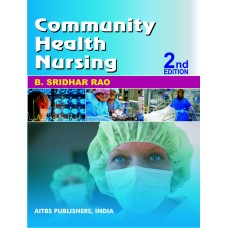ISBN: 9788174733252
Edition:
Year: 2024
Pages: 440
Size:
Publisher : AITBS Publishers, INDIA
“Community Health Nursing (second edition)” is an exhaustive, comprehensive, almost encyclopedic, treatise on the subject. It deals with the theoretic aspects of community and public health nursing, on the one hand and on the other, it enunciates the principles and practices of nursing intervention in various community health care settings. It aims at enabling the reader to focus on the health problems of the community and work with its members in solving them.
Following are some of the unique features of “Community Health Nursing (second edition)”:
• It describes the effective communication and pedagogical methods that, when judiciously adopted by the staff of nursing colleges, could raise the standard of teaching and promote learning in the students.
• It provides guidance to the learners as how to pay rapt attention to the teachers’ presentations, how to imbibe new knowledge contained in them and how to effectively remember it for protracted periods.
• It guides the students in preparing for the tests, viva voce and written examinations.
• It advocates environmental sustainability. Toward this end, the Book has set out information about energy from refuse and human excreta, about rain water harvesting and about waste water recycling.
• It contains a section dealing with the indigenous systems of medicine as they complement allopathy in the attainment of highest level of holistic health.
“Community Health Nursing (second edition)” maintains the style of the previous edition: The subject matter is presented in an organized, systematic and logical way to help its easy comprehension and retention for a long period. Again, as before, the Book incorporates the latest available statistical data, up-to-date research findings and advancements in health care at the global, national and regional levels. It may be mentioned in passing, that, while the Book is meant for undergraduate nursing students, the author will not be surprised if it is patronized by M.Sc Nursing students, and to a lesser extent, by the postgraduates in other disciplines like nutrition sciences, community medicine, general medicine, and pediatrics.
Write a review
Your Review: Note: HTML is not translated!
Rating: Bad Good




